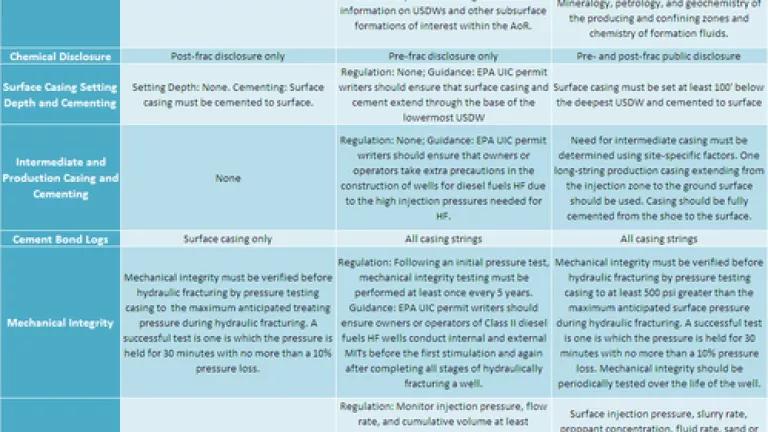A Tale of Two Agencies: How the BLM and EPA Will (and Won't) Regulate Hydraulic Fracturing

Despite being similar processes and posing similar risks to the environment, the way hydraulic fracturing is regulated is very different from the way the underground injection of other fluids is regulated. This difference was made even more apparent when, on the same day, the Bureau of Land Management (BLM) and the Environmental Protection Agency (EPA) both released proposed rules for regulating hydraulic fracturing.
Although both sets of rules have strengths and weaknesses, the differences between the two show how in some cases political influence rather than science has shaped the regulation of this practice. For example, EPA rules require operators to demonstrate that wells will be sited in a location that is geologically suitable, and that there are no pathways through which injected fluids may be able to reach groundwater. BLM rules don’t require any site characterization.
BLM needs to strengthen the rules it has issued and also needs to update its rules in other areas including site characterization, well construction, operation, monitoring, and reporting. Although the EPA guidance has some very good recommendations, EPA needs to issue legally binding rules for hydraulic fracturing with diesel fuels rather than just guidance – which is not enforceable. (For additional background information, see below*)
So how do these rules stack up compared both to each other and to best practices? The following comparison shows how each proposed rule would address several key areas of regulation (click to enlarge).
* EPA regulates the subsurface injection of fluids through the Underground Injection Control (UIC) program under the authority of the Safe Drinking Water Act (SDWA). Due to a loophole in the SDWA, hydraulic fracturing (HF) is exempt from UIC regulation except when diesel fuels are used in the hydraulic fracturing fluid. Rather than create a new class of injection well, EPA decided to regulate diesel fuel HF under an existing injection well class, Class II. But because Class II regulations were not written specifically for hydraulic fracturing, the regulations themselves don’t fully address the unique environmental risks associated with the practice.
BLM regulates oil and gas production on federal lands. These regulations cover everything from site construction to plugging and abandonment. But, as Secretary of the Interior Ken Salazar recently stated in testimony to Congress, “BLM’s current regulations specific to hydraulic fracturing—or stimulation operations—are in many ways outdated; they were written in 1982; and they reflect neither the significant technological advances in hydraulic fracturing nor the tremendous growth in its use that has occurred in the last 30 years.” The recently released draft rules seek to update only three aspects of BLM regulation of hydraulic fracturing: mechanical integrity of wells, waste water handling, and chemical disclosure.